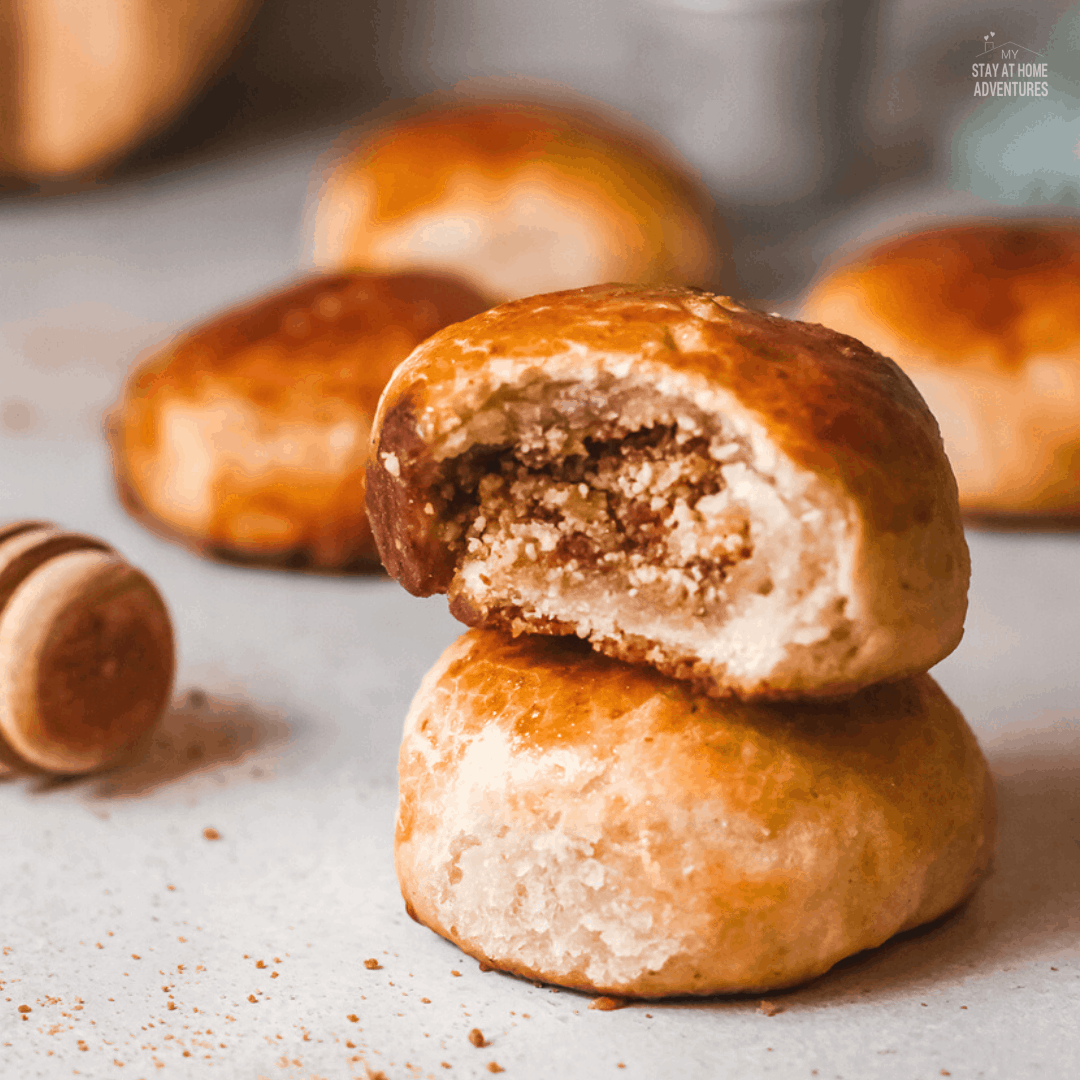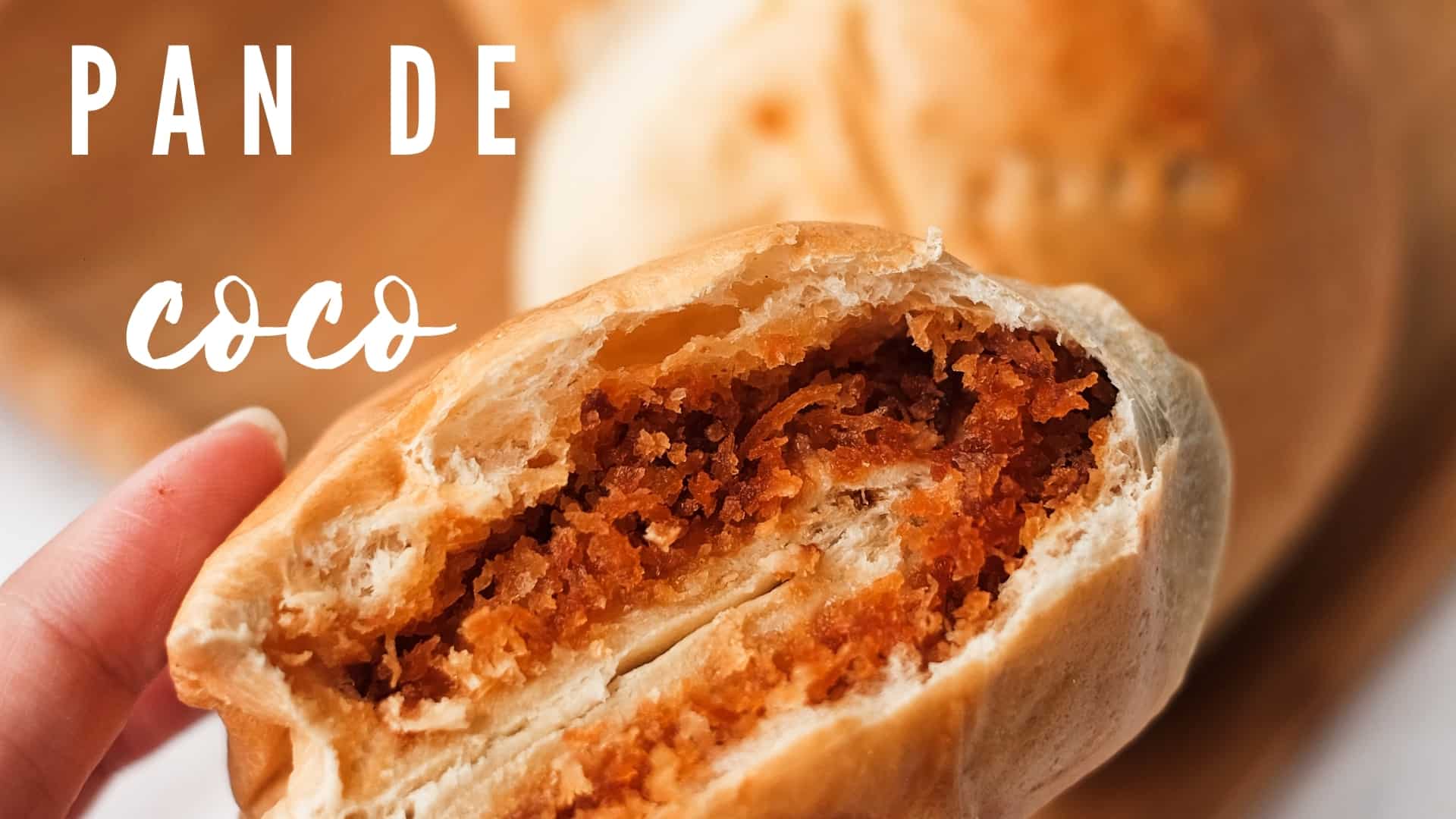Prepare to embark on a culinary adventure as we explore the delectable world of pan de coco, a beloved bread infused with the enchanting flavors of the tropics. With its soft, fluffy texture and sweet, coconutty goodness, this Caribbean classic has captured hearts and palates worldwide.
Join us as we delve into the secrets of crafting this irresistible treat, promising a sensory experience that will transport you to sun-kissed shores.
From gathering the finest ingredients to mastering the art of kneading and baking, we’ll guide you through every step of the pan de coco-making process. Along the way, we’ll uncover its cultural significance, discover tantalizing variations, and offer tips to ensure your bread turns out perfect every time.
So, let’s don our aprons and embark on a culinary journey that will leave your taste buds craving for more.
Ingredients and Materials
Creating this tantalizing Pan de Coco requires a curated selection of ingredients and a well-equipped kitchen to bring the recipe to life.
Essential ingredients include:
- Freshly grated coconut: The heart of this bread, imparting a rich, nutty flavor.
- Flour: Provides structure and body to the bread.
- Sugar: Enhances sweetness and promotes a golden-brown crust.
- Eggs: Binds the ingredients and adds richness.
- Baking powder: Acts as a leavening agent, creating a fluffy texture.
Necessary Kitchen Equipment and Tools
To facilitate the baking process, gather the following equipment:
- Mixing bowls: For combining ingredients and creating the dough.
- Measuring cups and spoons: To ensure accurate proportions.
- Grater: To finely grate the coconut.
- Whisk or electric mixer: To blend ingredients thoroughly.
- Loaf pan: To shape and bake the bread.
- Oven: To provide heat for baking.
Step-by-Step s

Preparing Pan de Coco is a straightforward process that involves mixing, shaping, and baking. Follow these s carefully to achieve the perfect balance of flavors and textures.
Remember, precise measurements and cooking times are essential for a successful outcome. Let’s dive into the s:
Mixing the Dough
| Ingredient | Measurement |
|---|---|
| All-purpose flour | 2 cups |
| Sugar | 1/2 cup |
| Salt | 1/2 teaspoon |
| Baking powder | 1 teaspoon |
| Milk | 1 cup |
| Coconut milk | 1/2 cup |
| Yeast | 1 packet (2 1/4 teaspoons) |
| Butter | 1/2 cup (softened) |
| Egg | 1 large |
In a large bowl, whisk together the flour, sugar, salt, and baking powder.
In a separate bowl, combine the milk, coconut milk, and yeast. Let stand for 5 minutes, or until the yeast becomes foamy.
Add the wet ingredients to the dry ingredients and mix until just combined. Stir in the butter and egg.
Knead the dough on a lightly floured surface for 5-7 minutes, or until it becomes smooth and elastic.
Variations and Substitutions
Pan de coco offers ample opportunities for customization and experimentation. By substituting or adding certain ingredients, you can create a unique and personalized version of this classic bread.
Explore different flavor combinations and add-ins to suit your taste preferences. Consider the following variations and substitutions:
Coconut
You can use fresh, shredded coconut or unsweetened desiccated coconut. Fresh coconut provides a more intense coconut flavor and a slightly chewier texture, while desiccated coconut is more convenient and offers a milder coconut taste.
Sweetener
While granulated sugar is traditional, you can substitute honey, maple syrup, or agave nectar for a slightly different sweetness profile. Honey adds a subtle floral note, maple syrup provides a rich and earthy flavor, and agave nectar offers a neutral sweetness.
Flour
All-purpose flour is the standard choice, but you can also use bread flour or whole wheat flour. Bread flour will result in a chewier loaf with a stronger gluten structure, while whole wheat flour adds a nutty flavor and extra fiber.
Flavorings
Add a teaspoon of vanilla extract, cinnamon, or nutmeg to enhance the flavor of your pan de coco. These spices complement the coconut and create a warm and inviting aroma.
Tips and Troubleshooting
Enhance your pan de coco experience with these valuable tips and troubleshooting guidance:
Tips to Enhance Success:
- Use high-quality, finely ground coconut for a smooth and flavorful bread.
- Knead the dough thoroughly to develop gluten and elasticity.
- Proof the dough in a warm place to allow the yeast to activate and rise.
- Bake the bread until it reaches an internal temperature of 200°F (93°C) to ensure it is cooked through.
- Let the bread cool completely before slicing to prevent tearing.
Troubleshooting Common Problems:
- Dense bread: Over-kneading or insufficient rising time can lead to a dense loaf.
Ensure you knead for the recommended time and allow the dough to rise for the full duration.
- Crumbly bread: Under-kneading or too much flour can result in a crumbly texture. Knead the dough until it becomes smooth and elastic, and add flour gradually until it forms a cohesive ball.
- Burnt edges: If the edges of the bread are browning too quickly, cover them with foil during the last 10 minutes of baking.
- Dry bread: Inadequate moisture can result in a dry loaf.
Ensure you measure the liquids accurately and consider adding a splash of milk or water if the dough feels too dry.
Nutritional Information
Pan de coco is a nutritious treat that provides a good source of energy, carbohydrates, and fiber.
It is also a good source of vitamins and minerals, including vitamin C, potassium, and magnesium.
Nutritional Content
The following table provides an estimate of the nutritional value of one serving (1 piece) of pan de coco:
| Nutrient | Amount | |—|—| | Calories | 200 | | Carbohydrates | 40g | | Protein | 5g | | Fat | 10g | | Fiber | 2g | | Vitamin C | 10mg | | Potassium | 100mg | | Magnesium | 20mg |
Cultural Significance
Pan de coco is a cherished delicacy with a rich history and deep cultural significance in various regions.
Originating in the Philippines, pan de coco has become a staple in many Southeast Asian cuisines, particularly in the Philippines and Indonesia. It is a testament to the vibrant culinary traditions of the region, where coconut is a ubiquitous ingredient.
Role in Philippine Cuisine
In the Philippines, pan de coco is an integral part of traditional celebrations and festivities. It is often served during Christmas, New Year, and other special occasions, symbolizing prosperity and abundance. The sweet and savory flavors of the bread evoke fond memories and a sense of nostalgia among Filipinos.
Presentation and Serving Suggestions
Pan de coco is traditionally presented on a large platter or serving dish. It can be served whole or cut into slices. The bread can be dusted with powdered sugar or drizzled with honey for a sweeter presentation.
Serving in Various Settings
Pan de coco is a versatile dish that can be served in a variety of settings. It is a popular choice for breakfast or brunch, and it can also be enjoyed as a dessert or snack. Here are a few suggestions for serving pan de coco in different settings:
- For breakfast or brunch, serve pan de coco with coffee or tea and a side of fruit or yogurt.
- For dessert, serve pan de coco with a scoop of ice cream or whipped cream.
- For a snack, serve pan de coco with a glass of milk or juice.
Visual Examples
[Insert visual examples or illustrations showcasing different presentation styles for pan de coco.]
Summary

As we bid farewell to our pan de coco adventure, we hope you’ve gained a newfound appreciation for this delectable bread and the rich culinary traditions it represents. Whether you choose to savor its classic form or experiment with exciting variations, we encourage you to embrace the joy of baking and share the sweet flavors of pan de coco with loved ones.
May this recipe serve as a testament to the power of simple ingredients, skillful preparation, and the enduring legacy of culinary heritage.
Helpful Answers
Can I substitute all-purpose flour for bread flour?
While all-purpose flour can be used, bread flour is preferred due to its higher protein content, which results in a chewier, more flavorful bread.
What if I don’t have coconut milk?
You can substitute cow’s milk, but the coconut milk adds a unique richness and flavor to the bread.
Can I add other flavors to my pan de coco?
Absolutely! Consider incorporating spices like cinnamon, nutmeg, or ginger for a warm, aromatic twist.
How long can I store pan de coco?
Store pan de coco in an airtight container at room temperature for up to 3 days.
